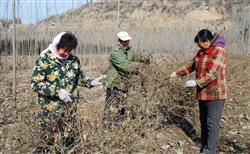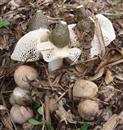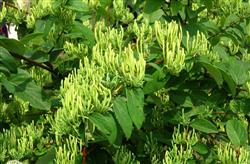Honeysuckle planting technique: when will honeysuckle be cut in winter?

When will the honeysuckle be cut in winter? How to cut honeysuckle in winter? Under normal circumstances, honeysuckle is usually pruned from the Beginning of Winter to the Beginning of Spring, that is, from mid-November to early February of the following year. Winter shearing can only be delayed, not in advance. Honeysuckle winter shearing can be divided into dry setting, strong branch light cutting, weak branch heavy cutting, old branch retraction and so on. The main purpose of winter shearing is to cut off the branches growing on the trunk and leave a small number of mother branches that can blossom in the next year. For young plants, honeysuckle winter shearing can select 4-5 robust branches on its main branch and cut off the upper end at 3-7 cm. Honeysuckle winter pruning adult trees should be weak and strong, straight, stacked and thinned, and the number of mother branches should be determined according to water and fertilizer conditions. After winter pruning, honeysuckle was sprayed with fungicides to keep warm and prevent frost, and apply fertilizer once and pour frozen water at the same time. Click to get more honeysuckle planting technology click to get more medicinal material planting technology
- Prev

Dictyophora cultivation: how to standardize the cultivation?
How to standardize the cultivation of Dictyophora? What should I pay attention to? Also ask experienced netizens to help introduce the standardized cultivation techniques of Dictyophora. The following is a detailed introduction of the farming network for netizens' reference. 1. Environmental requirements of Dictyophora: nutritional requirements of Dictyophora: Dictyophora is a nitrogen-loving bacteria, nitrogen is bamboo sun he.
- Next

Honeysuckle planting technique: what is honeysuckle rust?
What is honeysuckle rust? What harm does rust do to honeysuckle? Also ask experienced friends to introduce the harm of rust to honeysuckle: after the damage of honeysuckle rust disease, tea-brown or dark brown spots appear on the back of the leaves; some also appear near round spots on the surface of the leaves, with a blister in the center, which can cause leaves in severe cases.
Related
- Fuxing push coffee new agricultural production and marketing class: lack of small-scale processing plants
- Jujube rice field leisure farm deep ploughing Yilan for five years to create a space for organic food and play
- Nongyu Farm-A trial of organic papaya for brave women with advanced technology
- Four points for attention in the prevention and control of diseases and insect pests of edible fungi
- How to add nutrient solution to Edible Fungi
- Is there any good way to control edible fungus mites?
- Open Inoculation Technology of Edible Fungi
- Is there any clever way to use fertilizer for edible fungus in winter?
- What agents are used to kill the pathogens of edible fungi in the mushroom shed?
- Rapid drying of Edible Fungi

